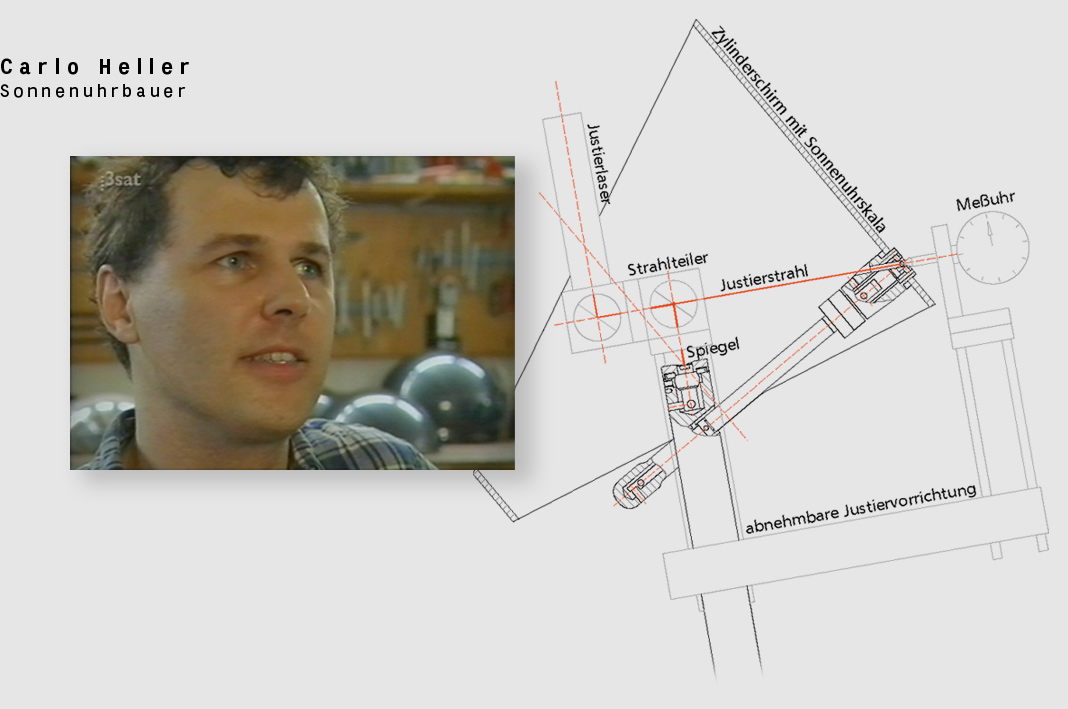
Key experience
January 17, 1971. Carlo Heller, 11 years old, describes a natural phenomenon in his diary: "For about 5 seconds, we see a meteorite shooting through the sky like a falling aeroplane." A key experience, which aroused his enthusiasm for astronomy. His first wooden sundial was created in 1976. Three years later, he had progressed to an electronically controlled sundial (see illustration), which scanned the heavens for the sun, until the light hit the integrated photo cell. A digital display was used to show the time.
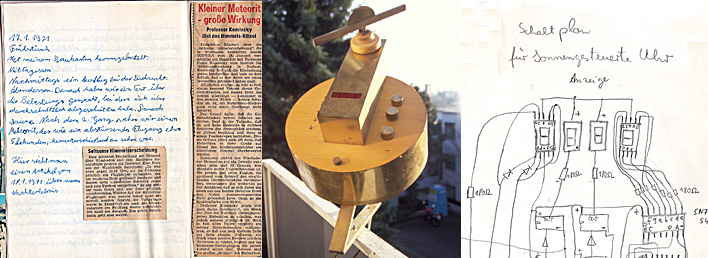
Mirror on the window sill
In 1980 he placed a mirror on the window sill and watched the reflected light on the ceiling. An idea was born, which has obsessed him to this day. Using the programmable pocket calculator TI59, Carlo Heller calculated a scale which he sketched onto the ceiling, and which could be used to tell the time via a reflected point of light.
Soon the ceiling is too small. From this, Heller progresses to a projection screen, which he sets up directly in front of the mirror. In 1989 he produces his first sundial using this principle. Even today, this first creation occupies pride of place on the terrace.
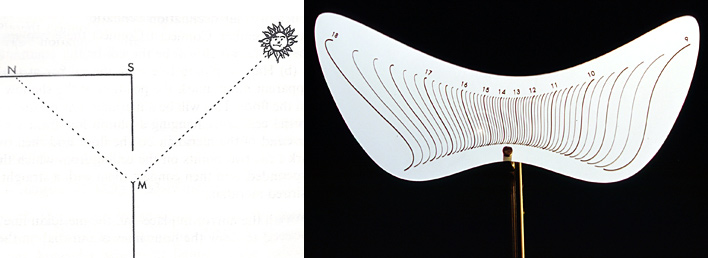
Absolutely accurate time display
In his spare time from a university degree, doctorate and a career in engineering, Heller further perfected his sundial models. He had an ambitious objective: an absolutely accurate time display. The previously flat projection screen is now cylindrical, the scale is lithographically printed onto foil (see illustration left). An adjustment mechanism with 11 adjustable axes enabled him to set up the mirror and the display screen, so that the rays of light orthogonally emitted from an adjusting laser in four different directions of the room could be brought together with defined marking points on the screen (illustration right). But Heller realises that it is not possible to position the screen with the required accuracy in relation to the mirror. When the three dimensional position of the screen is correct, then its distance from the mirror is altered and vice versa.
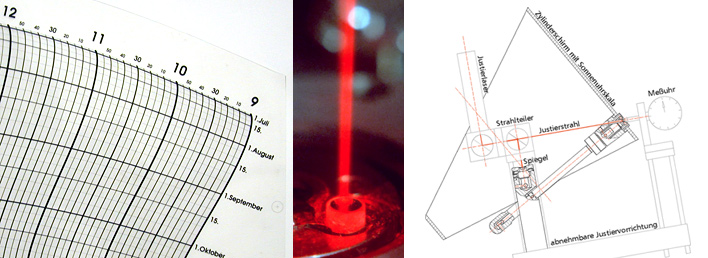
Helios
Heller remembers the breakthrough: "I had the idea, not to put a theory into practice, but to do the opposite." He founds his own company, called Helios. The sundial is now produced with an elaborate laser production technique in conjunction with precise optical measuring methods. The adjustment of the screen is built into the manufacturing process. He is able to put his experience as a mechanical engineer to good use in the construction of the production machinery. He achieves his objective: an absolutely accurate time display. But not only this: during this time-span of 20 years, the sundial has matured into an excellent product both in function and design. In May 2001 Carlo Heller begins to launch the sundial onto the market.
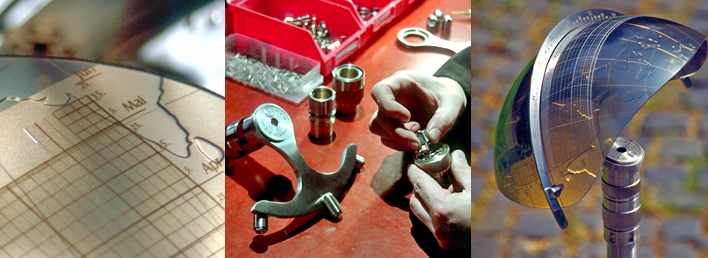
Please look at the film about the inventor Carlo Heller: